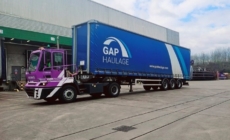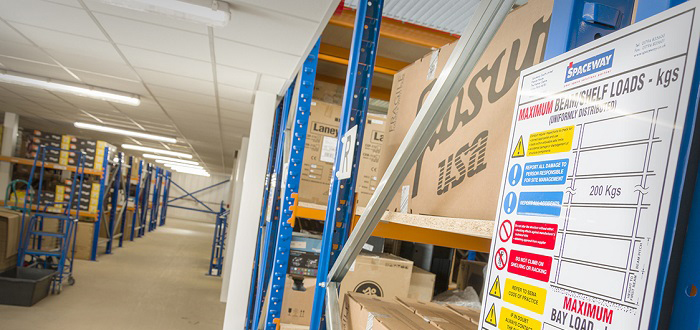-
Nutrivend selects Forterro’s Orderwise to support online expansion and streamline operations - April 11, 2025
-
ARROWXL LAUNCHES AMBITIOUS ZERO WASTE ROADMAP - April 8, 2025
-
THE BCMPA’S NEW CAMPAIGN DRIVES OUTSOURCING SUCCESS IN Q1 - April 7, 2025
-
BLACKOUT TECHNOLOGIES TARGETS TELEMATICS-INTEGRATED MOBILE DEVICE BLOCKING TO COMBAT SMARTPHONE DISTRACTION - April 1, 2025
-
OpenADR Alliance announces first OpenADR 3.0 certified products with EVoke Systems, E.ON Energy and Universal Devices - March 25, 2025
-
Growing fulfilment and contract packer appoints new Managing Director - March 25, 2025
-
When is it time to invest in a WMS? Understanding the key trigger points - March 25, 2025
-
eCapital helps Vantage Recruitment on its journey to financial success - March 24, 2025
-
Hugo Beck Celebrates 70 Years of Packaging Innovation with Open House Events - March 20, 2025
-
PROLOG FULFILMENT SUPPORTS LUNA DAILY’S COMMITMENT TO BETTER BODY CARE FOR ALL WOMEN - March 19, 2025
Optimising your warehouse for ecommerce: 6 ways an ecommerce warehouse is special
Whether you have a pure e-tail, a multichannel, or fully integrated omnichannel business, ecommerce is booming. Fuelled by mobile and tablet sales, it’s a mainstream shopping channel and according to eMarketer’s estimates, ecommerce sales at US$2.3 trillion, accounted for one-tenth of total retail sales worldwide in 2017. That’s a phenomenal amount of money and set to exceed US$27 trillion by 2020.
What’s also interesting is that many businesses mistakenly prioritise improvements to their website when they consider their ecommerce strategy and focus their investments on the ‘front-end’. The average development cost of a fully functional ecommerce website is frequently in excess of £100,000 and many companies will invest much more into developing a highly sophisticated online store front. Yet this expenditure can be to the detriment of back office operations including the warehouse, which, out of sight for the customer, can be overlooked. This is short-sighted because as experienced ecommerce businesses will testify, getting the back end of an ecommerce operation right is actually more important for long term success than having a sophisticated front end store.
As James Runciman, DC Operations Manager at Animal, a fashion sportswear brand and longstanding customer highlighted in Indigo’s latest white paper, “the warehouse is effectively the hub of an ecommerce operation and has to fulfil the promises made at the front end. It’s very easy for someone to create a compelling offer for consumers, but someone has to physically ensure that those expectations are met, which is where the warehouse comes in.”
Optimising key warehouse processes is essential to running any efficient ecommerce business, by allowing a wide combination of order profiles – from traditional bulk orders to smaller e-commerce shipments – to be fulfilled efficiently and by providing the right level of stock visibility to avoid disappointing customers. Here are 6 important reasons why e-commerce warehouses need careful optimisation beyond that required for the fulfilment of traditional order delivery profiles.
Resource intensive, single item order profiles
Every warehouse is unique, with specific requirements and conventions, often based on the businesses’ industry sector and typical order profiles. In a traditional warehouse, bulk orders would typically be placed with retailers, who then sell direct to the consumer – either via mail order or through retail outlets. This is not the case in an ecommerce warehouse, regardless of whether the operation is purely online, multichannel or omnichannel. Instead, mainly single item orders are being placed 24/7, with an expectation from the consumer that they will be receiving their goods as quickly as possible, in perfect condition and preferably, with no extra delivery charges.
Unpredictability of demand
This presents an ecommerce warehouse with very specific challenges to overcome. Traditional bulk order fulfilment methods are not viable and without the right level of optimisation, single order fulfilment is too costly to sustain in the long term, due to the extra time and resources required. So too is managing the sheer volume of orders placed.
For example, a wholesale customer will order a set number of units to be delivered on at a future date, which is straightforward to plan ahead for. Instead with B2C ecommerce, a promotion can mean coming into work in the morning faced with thousands of orders to fulfil. This can be difficult to manage cost efficiently.
High price sensitivity
Although margins in an ecommerce business should theoretically be higher due to the removal of ‘middlemen’ in the supply chain, consumers are highly price sensitive and competition in many sectors is intense. The practice of ‘showrooming’ means retailers are often competing on price across multiple channels, with customers viewing an item in one outlet before placing their final order with the lowest priced vendor. In these situations, value adds and customer service are key to winning the deal without compromising margins too heavily.
Expectation for free deliveries
A general trend towards free delivery is emerging. Consumers have become reluctant to pay extra for standard delivery services and intensifying competition levels means retailers are responding with ever more attractive offers to secure sales. Although services like click and collect are growing very rapidly, the vast majority of customers tend to prefer free standard delivery.
Micro-optimisation of processes
Meeting all these expectations requires careful synchronisation of warehouse operations and sales order processes to ensure that orders can be shipped on time and in full. Not only does this avoid disappointing the consumer, but it also means that a warehouse can be run more efficiently. When sales margins are so small they can be calculated in fractions, every little bit of optimisation adds up to significant savings being achieved over the long term.
A seamless, convenient service
Customers also expect a seamless interaction with the multichannel and omnichannel brands they buy from online. Ecommerce has boomed because it is convenient and customers expect the same level of convenience, information and a personalised service, at every stage in the buying and returns process. Brands not delivering according to customer expectations and providing a poor experience, run the risk of being publically shamed on social media and prominent consumer review websites, again illustrating the pitfalls of focusing too much on the front end store front and neglecting vital back office operations.
Getting the core ingredients for successful ecommerce right falls squarely into the domain of supply chain strategy. No longer a back-room function, the opportunity presented by ecommerce has propelled warehouse and logistics operations – and the wider supply chain – to become a highly strategic business centre. Contrary to popular belief, it is the warehouse and not the website that is the hub of an ecommerce operation.
Author: Eric Carter, Solutions Architect at Indigo Software


































